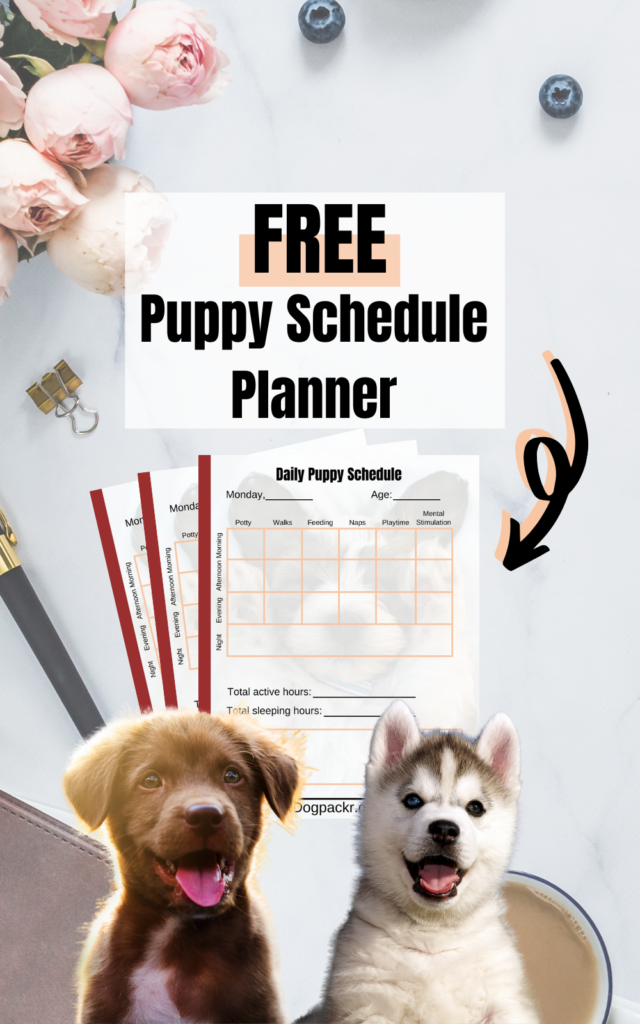
Knowing how to teach your dog to come when called is probably one of the most valuable dog lessons.
Even if it isn’t often, there will be times when your dog is off leash—whether you wanted him to be or not. And when that happens, you want to be sure that your pup will actually come back when you call him.
I’m very fortunate with my dog Baloo. We started training him for recall as soon as I got him as a puppy. And it works extremely well. If there’s a lot of distraction, I sometimes need to call a bit louder and use my chattering tool to get his attention. But he always comes back when I call him!
Want to achieve that too?
In this article, I’ll tell you about the 13 steps I used to train Baloo for impeccable recall. But first, let’s quickly talk about why a solid recall is so important.
Table of Contents
Why a Solid Recall Is Important
Having a good recall for your dog simply means that your dog comes to you when you call him. It seems pretty basic, but having a solid recall is really important for you and your dog!
Here are a few reasons why.
Dogs Love to Explore Off Leash
Keeping your dog leashed while he’s in public is smart—and in many places it’s the law!
But that doesn’t mean your dog shouldn’t be off leash at all! There are plenty of off leash dog parks, or you might want to try off-leash hiking. And sometimes accidents happen. Maybe your dog is something of an escape artist, and tends to get out of your yard.
These situations will come up. That’s why it’s important to have a really good recall—especially if your dog is off leash by accident.
This way, even if you’re just allowing him to explore a field off leash for a bit, you can trust that when you call him, he’ll come back to you.
Safety Measure for Your Dog and Others
Your dog might be well-trained, but that doesn’t mean other people’s dogs are! If your dog ends up in a situation where he could be hurt, or other dogs or people could be hurt, it’s important to be able to get him away from that.
For example, maybe your dog runs up to another in a dog park, and that dog is reactive. As soon as that dog starts showing signs of aggression and reactivity, having a good recall means you can get your dog away and keep him safe.
Builds Mutual Trust
Training in general is a fantastic way to build trust between you and your dog. But training your dog to have a solid recall is a particularly good way to do it.
When you teach your dog recall, it means that you can trust him to come when called. And he, in turn, trusts you to know what’s best, which is exactly why he comes when you tell him to!
Building this mutual trust allows you and your dog to have an even stronger relationship. And that’s an amazing thing!
How to Teach a Dog to Come When Called
Now that we know why it’s important to have a good recall for your dog, here are 13 steps to teach your dog to come when called.
If you want to take your dog training to the next level, but don’t want to spend hundreds of dollars on a dog training school, then I highly recommend the online training course BrainTraining4Dogs.
This course only costs $47 and teaches you everything you need to know to have a calm and well-mannered dog.
Make sure to check out my review of the course to learn more.
1. Start Indoors and Praise Him Every Time He Comes to You
Training any new trick should start with baby steps. You don’t want to overwhelm your dog right off the bat! Help him grasp the concept of recall by beginning his training indoors, far away from distractions.
You’ll also want to be sure to start with short distances. Every time your dog comes to you, make sure to praise him. This way he’ll associate coming to you with positive feelings!
Positive feelings are essential for dog training in general—not just when you want to teach your dog to come when called.
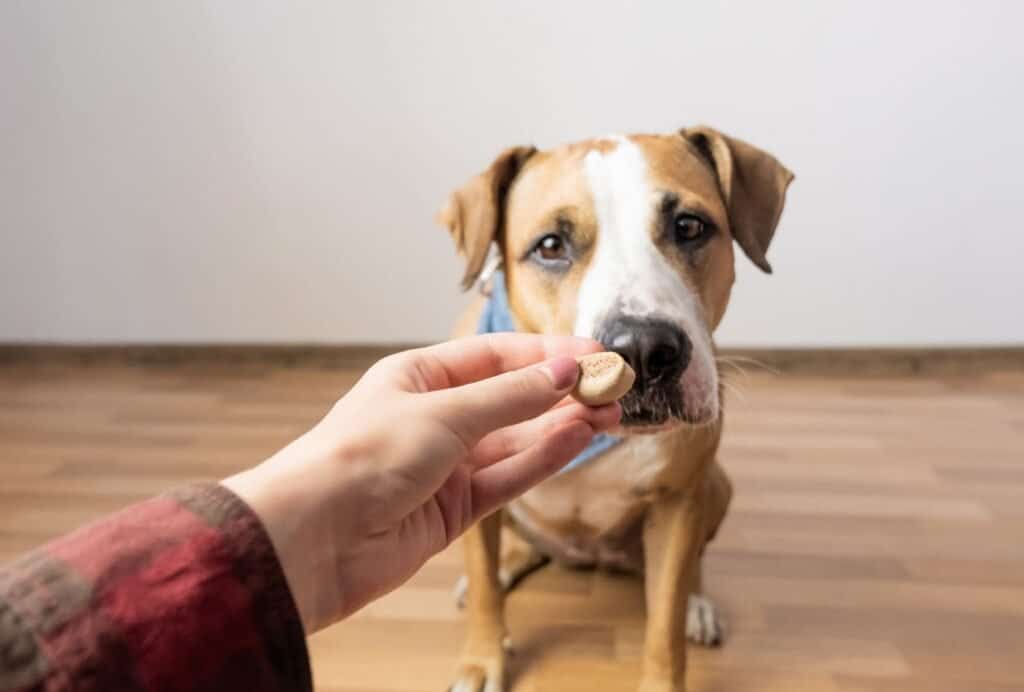
2. Bend Your Knees, Call Your Dog and Praise him Lavishly When He Comes
When you’re a short distance away from your dog, bend your knees so you’re closer to his level. This will help you get his attention! Then call your dog to you.
When he comes to you, give him a lot of treats, pats, and speak excitedly.
The important thing is this: You want coming to you when called to be exciting for your dog. It should be something that makes him happy!
3. Use a Strong Command
When it comes to the command you’ll be saying out loud to your dog, you want to pick a word you don’t use often.
That means that using “come” as your command probably isn’t a good idea. You use it too much when talking to your dog. That means that the command loses its efficacy.
Instead, use a word that you don’t use super often, like “heel.” It can be anything, as long as it’s something you’ll remember and that you don’t use too often.
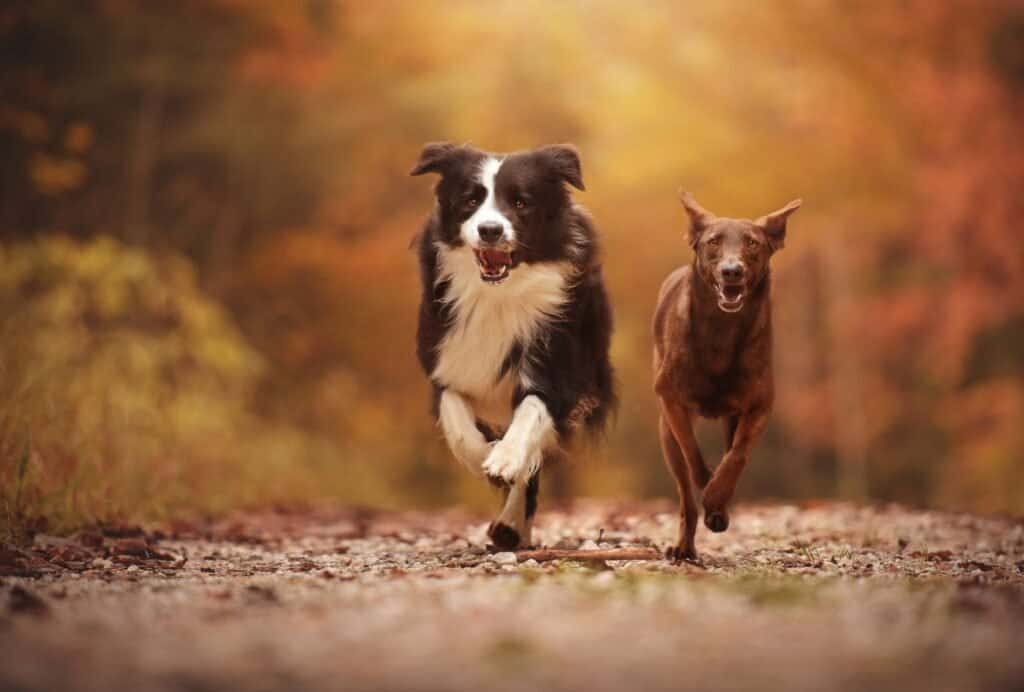
4. Say the Command Every Time Your Dog Comes
When it comes to training, consistency is your best friend!
Every time your dog comes to you, make sure to use your command. This will get him used to it, and he’ll start associating coming to you with the word you use.
Remember to also treat your dog every time he comes to you, to keep up those positive associations!
5. Use a Long Leash When Training Outside
Once your dog is consistently coming to you when called, you can bring him outside. Your yard is a good place to start, or a field nearby.
While you’re first working on this, use a long leash while you work on training. You can buy leashes of a variety of sizes.
Having a long leash will allow you to teach your dog to come when called—while letting you pull him back if he gets too distracted by all the fun things outside!
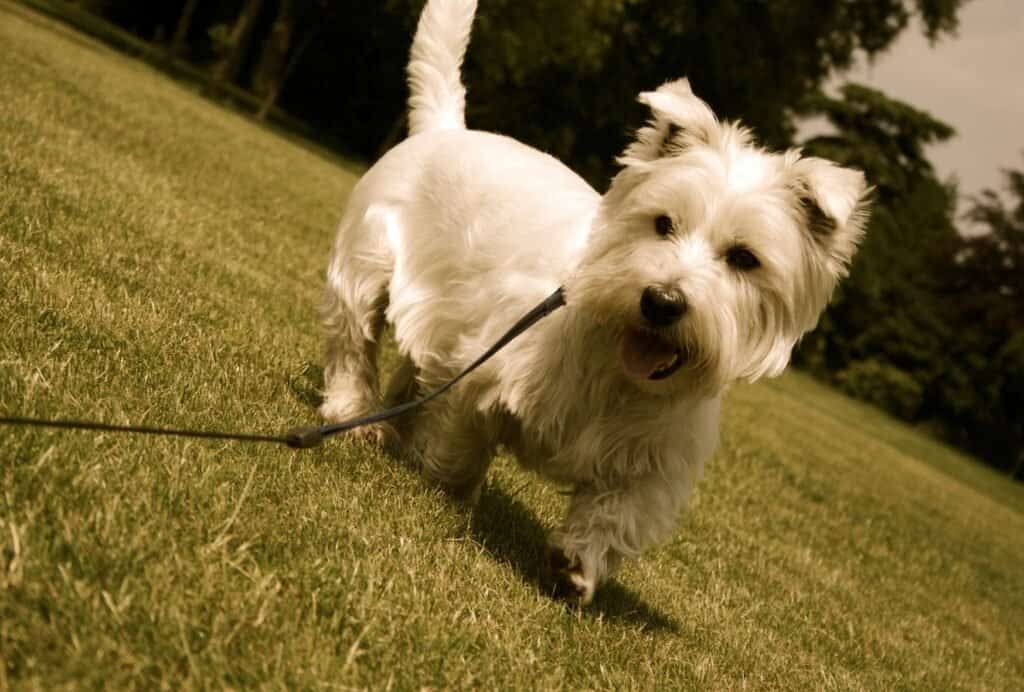
6. Do the “turn on your heel” exercise
This exercise is a great way to make sure your dog is paying attention to you.
To practice, what you’ll do is walk in one direction with your dog walking alongside you. If your dog overtakes you, turn on your heel and walk in another direction without saying anything. Just wait until your dog has caught up with you.
You should only do this with a long leash, unless your dog is still a puppy. Puppies have a strong pack instinct and will want to stay close to you. As the dog grows up, this instinct lessens, which is why it’s important to have a leash.
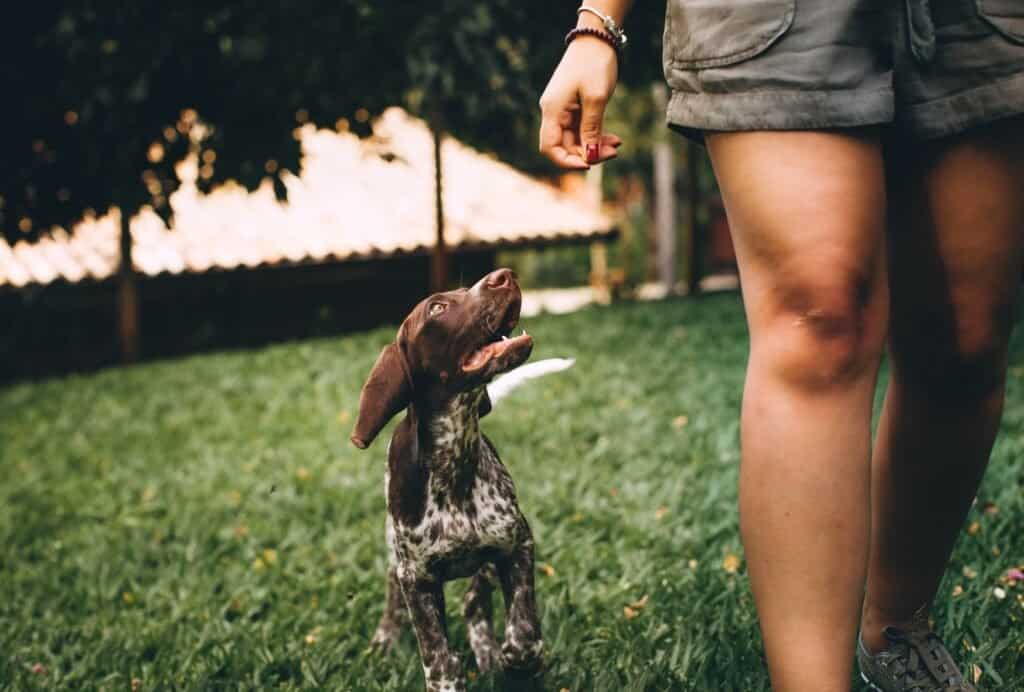
7. Bend Your Knees, Make a Noise to Get Your Dog’s Attention
Get closer to your dog’s level by bending your knees. This will make it easier to get your dog’s attention. To make sure he notices you, make a noise! You can slap your knees or clap or make a sound to get him to come to you.
Don’t say the command just, yet. He’s probably forgotten about that with all the distractions happening outside. So, you first want to show him that coming to you is awesome!
Only once he’s got that, you’ll be introducing the command.
8. Praise Him Lavishly When He Comes to You
Every time your dog comes to you, make sure to reward him with a lot of praise and treats. Coming to you should be rewarding, and something that makes him excited!
So get your dog enthusiastic about coming to you by giving him lots of praise when he does it.
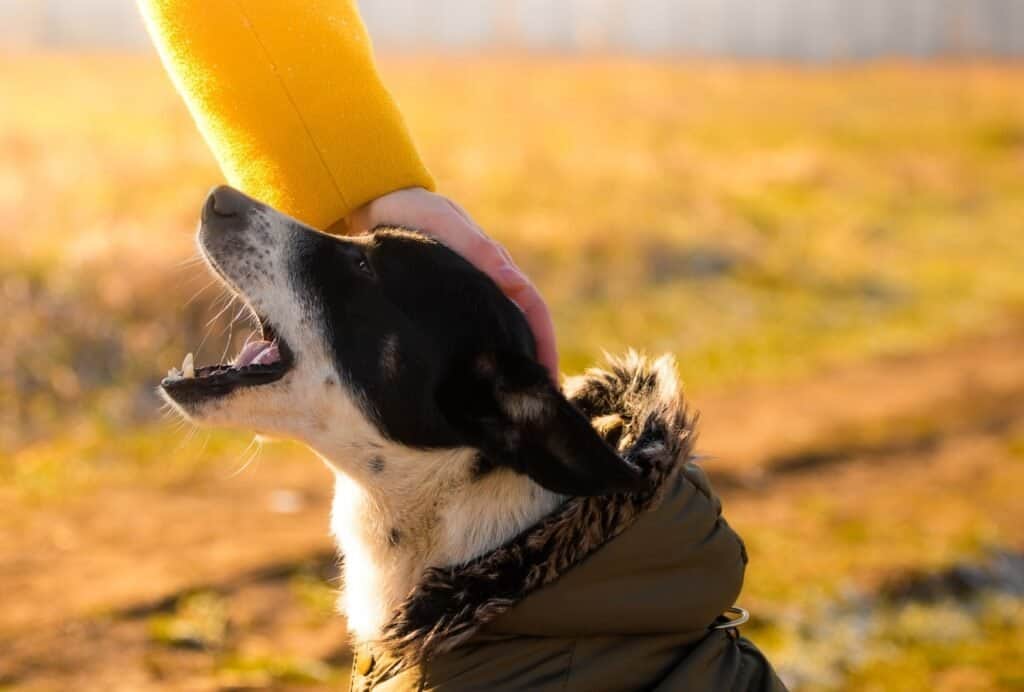
9. Only Say the Command Once He’s Already Running
You want your dog to associate the command you’re using with the act of coming to you.
You should only say the command once he’s already running toward you. By doing this, you’ll form an association between the command word you’re using and the act of your dog coming. Soon, your dog will know that when he hears that word, it’s time to start running over!
10. Say the Command and Run Away From Your Dog
Once your dog gets used to coming to you when called, you can up the difficulty for him.
Call him, and immediately start running away from your dog. This will trigger your dog’s hunting and pack instincts. Not only is it fun to chase you, but he also doesn’t want to be left behind!
This will reinforce the behavior that he’s now connected with the command.
Doing this, you also teach your dog to come when called regardless of what you are doing at the moment.
11. Always Treat and Praise Your Dog When He’s Coming to You
Because recall can be challenging for dogs, especially dogs that are easily distracted, it’s really important to always reward your dog when he does as you ask!
Give your dog lots of treats, and tell him “good dog.”
You want coming to you to always be more rewarding than whatever else is going on. And the best way to do that is to make sure you’re always treating and praising him when he comes!
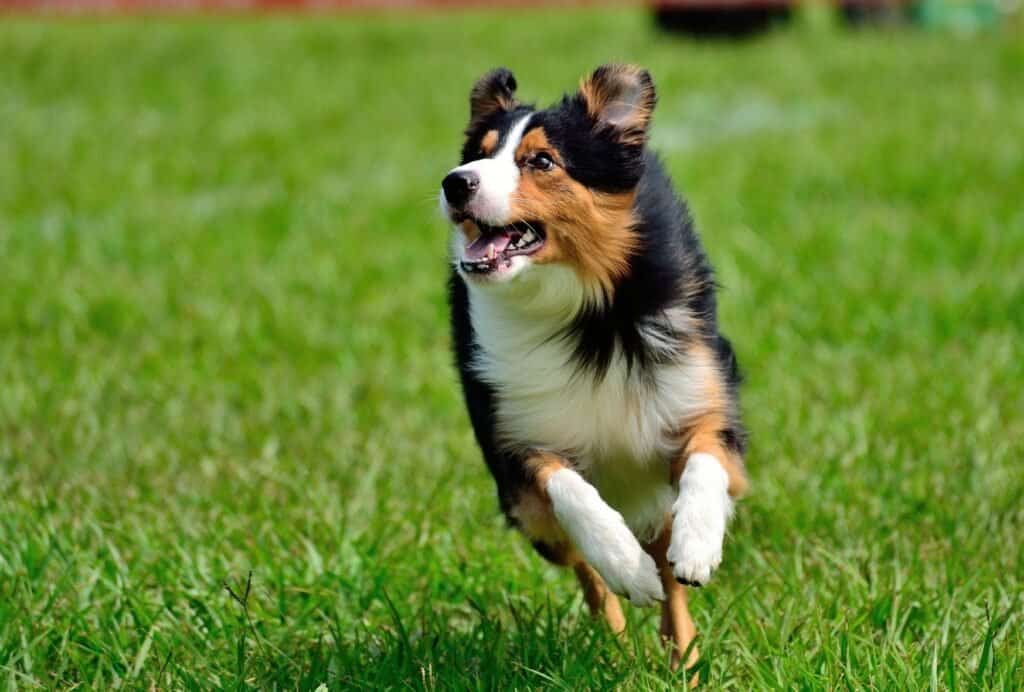
12. Even Praise Him When He Didn’t Come Right Away
Yep—that’s right. Even if it takes a few extra seconds for your dog to come to you, you should still treat and praise him. After all, he did as you asked, even if it took him a little longer.
The more consistently you work on his recall, the better he’ll be at it. And the faster he’ll come to you when called!
I can’t stress this enough, you really always have to praise him when he’s coming to you. Yes, even after he rolled in that poop or chased that squirrel…
By the time he’s coming to you, he’ll have forgotten what he was just doing. So, if you punish him once he’s with you, what do you think will happen?
He thinks he’s getting punished for coming to you!!!
Now, that’s the best way to keep him from ever coming when called again…
13. Use Some Kind of Noise to Get Your Dog’s Attention in Areas with High Distraction
If you’re outside and there’s a lot going on, you might need to make a noise to get your dog to notice you. A whistle, a clap, or any kind of sound will work.
Remember not to blame your dog if it takes him a little longer to come to you in areas with high distraction. Dogs are emotional creatures, and can get easily overwhelmed. With practice and consistency, your dog’s recall will only get better.
Conclusion
Having a good recall is really important for your dog. It helps the two of you trust each other, keeps your dog and others safe, and means your dog can more safely explore off leash.
While it can be a bit of a challenge to teach your dog to come when called, these 13 steps will make recall training easier. And remember to be patient, consistent, and make training fun and exciting for both you and your pup!
P.s.: Don’t forget to check out Braintraining4dogs if you want to take your dog training game to the next level. It offers a 60-day money back guarantee, so you have nothing to lose.
*Disclosure: This post may contain affiliate links, meaning, I get a commission if you decide to make a purchase through one of my links, at no cost to you.

